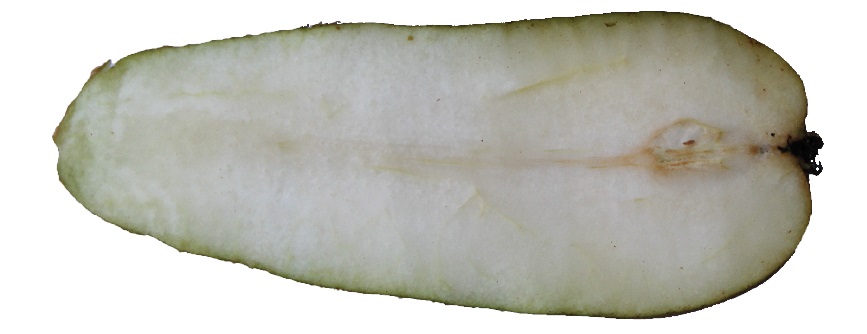Term (virginity, Greek parthenos = virgin and karpos = fruit) for unisexual reproduction or fruit development without prior fertilisation in plants, which occurs without the formation of seeds or kernels. The phenomenon also occurs in animals, such as the vine pest, and is called parthenogenesis (virgin production). Certain hormones simulate a fertilisation situation for the unfertilised egg cell, which then begins to divide and mature into an organism. In plants, a distinction is made between inductive/stimulative, spontaneously occurring vegetative and pseudo-parthenocarpy (stenospermocarpy) triggered by external stimuli.
Different types
The tendency is promoted by favourable environmental conditions such as temperature, humidity. Inductive parthenocarpy is triggered by mechanical stimulation of the petal of the flower. It can also occur as a result of flower frosts, when the ovule is destroyed but the ovary tissue remains intact. True parthenocarpy is common in pineapples, apples, bananas, pears (see picture), figs and citrus fruits. The fruits typically have no seeds or only rudimentary seeds. Parthenocarpy is also artificially induced by treating the flowers with auxins (hormones). Seedless (low-seeded) aubergines, cucumbers and tomatoes are grown in this way.

Grapes
Completely seedless grapes are a product of chance, or a freak of nature. However, almost all traditionally bred seedless grape varieties, as is desirable for table grapes, are not completely seedless. In addition to some parthenocarpic (seedless) berries, one finds a high proportion of berries with stunted, very soft seeds, which one therefore does not feel at all when eating them. The term is then stenospermocarpy. In common parlance, no distinction is made between parthenocarpic and stenospermocarpic seed plants and all are described as "seedless", although "seedless" would be more correct. Seedlessness, however, is not a static condition. If this were the case, it would not be possible to breed new seedless/seedless grape varieties, because the seeds are an absolute prerequisite for the germination of the seedling (see also under flowering). The coulure is often called parthenocarpy. However, this is wrong because no true virginity has yet been proven in grapevines. For more information, see also grapevine.
Pear: by Kopiersperre - Own work, CC BY-SA 3.0, Link
Voices of our members

Serious sources on the internet are rare - and Wine lexicon from wein.plus is one such source. When researching for my articles, I regularly consult the wein.plus encyclopaedia. There I get reliable and detailed information.
Thomas Götz
Weinberater, Weinblogger und Journalist; Schwendi